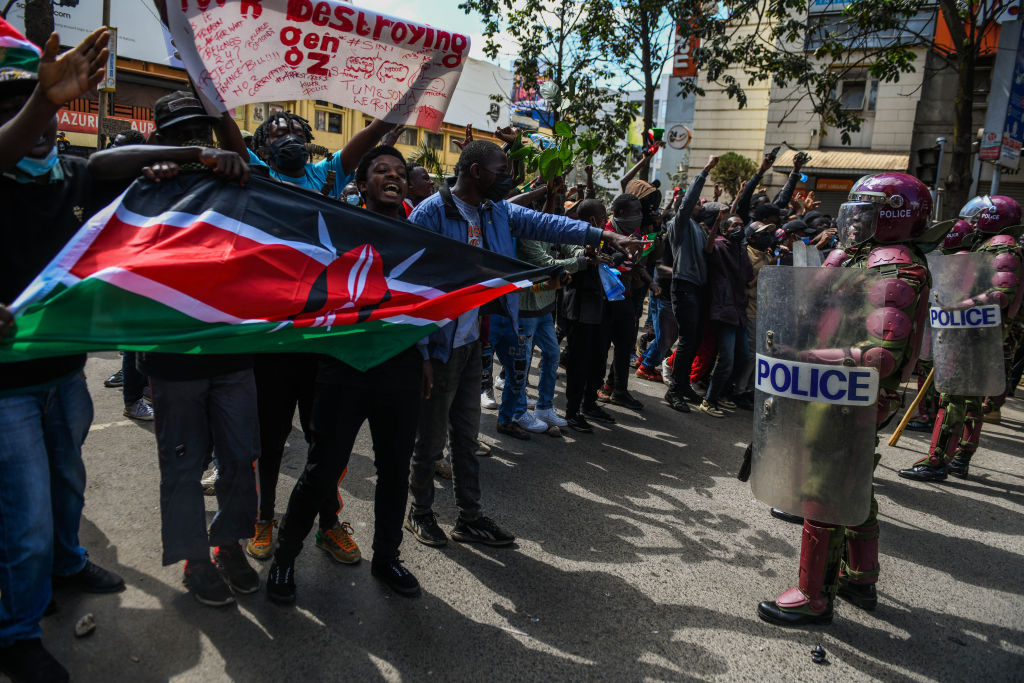Kenyan protesters vowed on Thursday to keep up their demonstrations against President William Ruto’s government despite his pledge to withdraw proposed tax hikes that prompted a week of deadly unrest.
He backed down on fiscal measures that the government had said were needed to fix the nation’s creaking finances. Many activists say they now want more, including a complete overhaul of the government and Ruto’s resignation.
Here are some details about the tax proposals, what economic problems they were meant to fix and what the government is planning to do next:
WHAT WAS THE FINANCE BILL?
A finance bill is usually presented to parliament before the start of a financial year that runs from July to June, laying out the government’s fiscal plans.
In the 2024/25 bill, the Kenyan government wanted to raise $2.7 billion in additional taxes to reduce the budget deficit and borrowing. Kenya’s public debt stands at 68% of GDP, higher than the 55% of GDP recommended by the World Bank and the International Monetary Fund.
Ruto has been caught between the competing demands of lenders such as the International Monetary Fund, which is urging the government to cut deficits to obtain more funding, and a hard-pressed population.
On Wednesday, he withdrew the bill, bowing to pressure from the protesters who had argued the measures would choke the economy and raise the cost of living for people already struggling to make ends meet.
WHAT WERE THE PROPOSED TAX MEASURES?
The proposed measures that triggered protests included new levies on basic commodities such as bread, vegetable oil and sugar and a new motor vehicle circulation tax – pegged at 2.5% of the value of a car to be paid annually.
An “eco levy” on most manufactured goods had also been on the cards, though sanitary towels and diapers had been exempted in earlier adjustment, among other last-minute concessions, before the whole bill was pulled.
The bill had proposed increasing existing taxes on financial transactions.
The government said the tax measures were necessary to fund development programmes and cut public debt.
WHAT’S NEXT FOR THE BILL AND BUDGET DEFICIT?
In a televised addressed, Ruto said on Wednesday he will not sign the finance bill to law.
The bill will return to parliament with the recommendation that all its clauses be deleted, Ruto wrote in a document addressed to the speaker of the national assembly.
To help tackle the fiscal deficit, Ruto said the government will work on austerity measures – beginning with cuts to the presidency’s own budget.
The finance ministry said last week, before the bill was withdrawn, that concessions on tax hikes would blow a 200 billion Kenyan shilling ($1.55 billion) hole in the 2024/25 budget and necessitate spending cuts.
WHAT’S NEXT FOR THE PROTESTS?
Ruto has pledged to start a dialogue with Kenyan youth, but he was yet to provide more details.
Despite the scrapping of the bill, some protesters vowed to “occupy State House” on Thursday, as they called for Ruto’s resignation.
Messages on social media, however, suggested people were divided on how far to go with the demonstrations. There is no recognised figurehead leading the protests and crowd have responded to banners, slogans and calls on X and other outlets.
Police put up roadblocks on streets leading to the presidential palace on Thursday.
(Reuters)




















